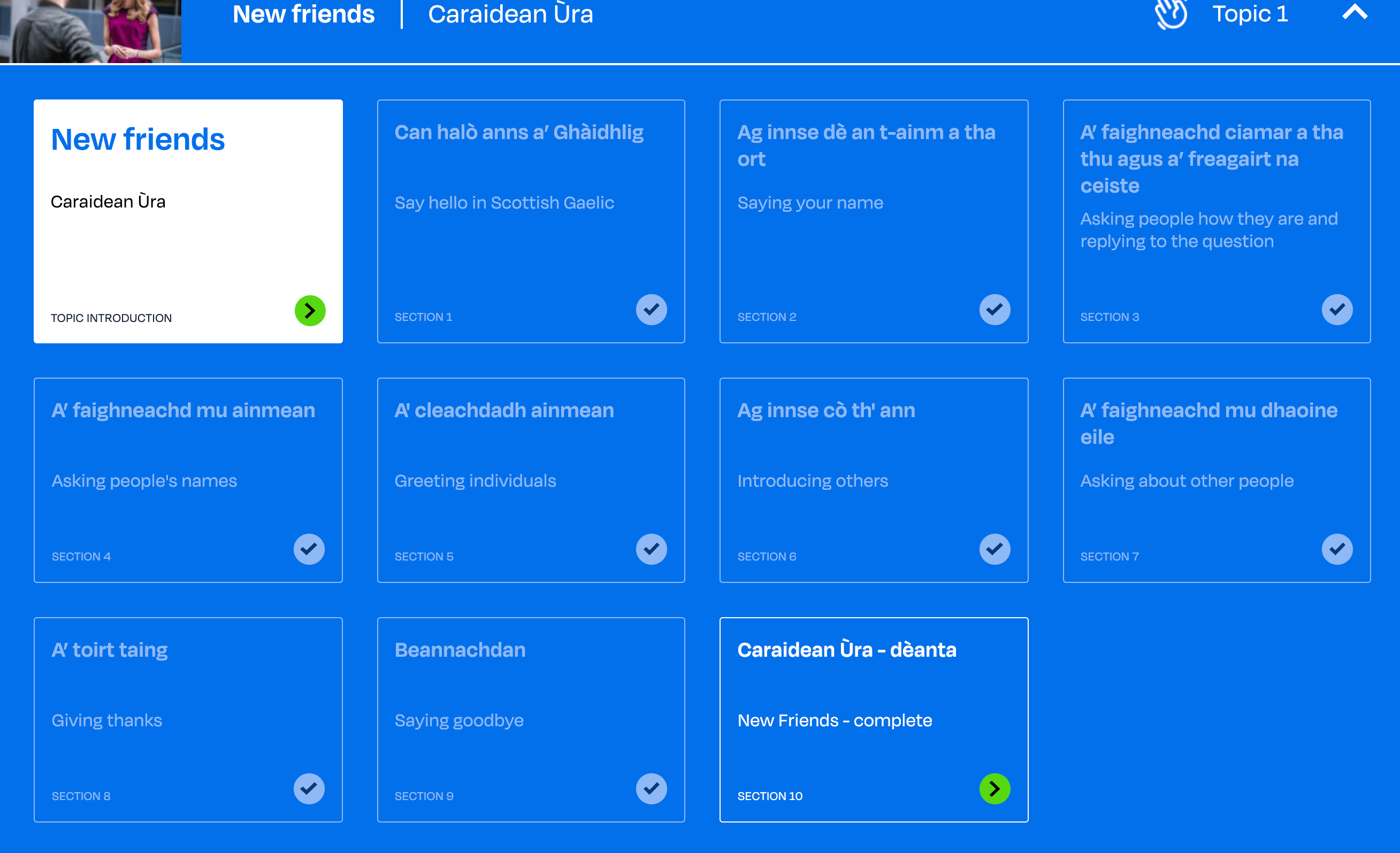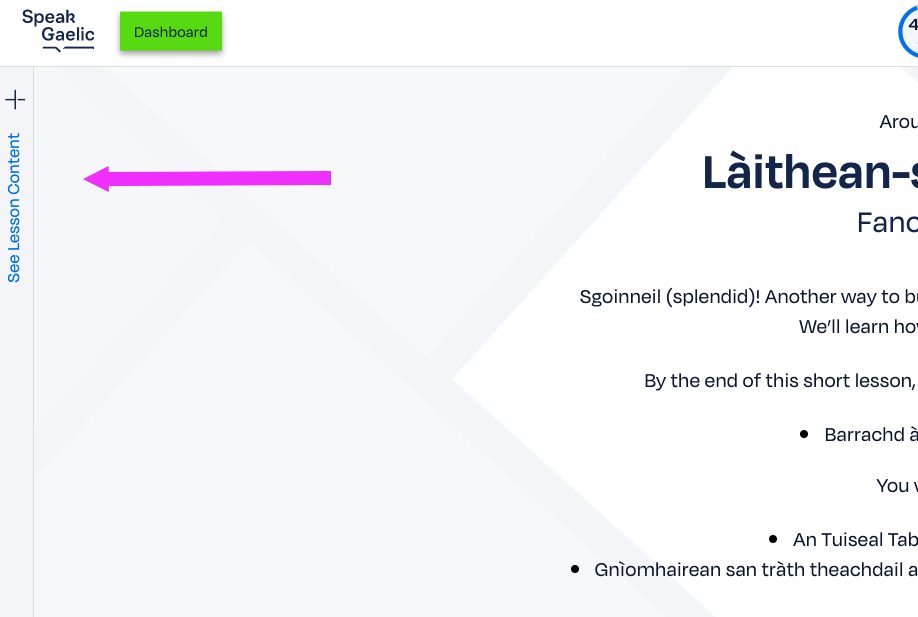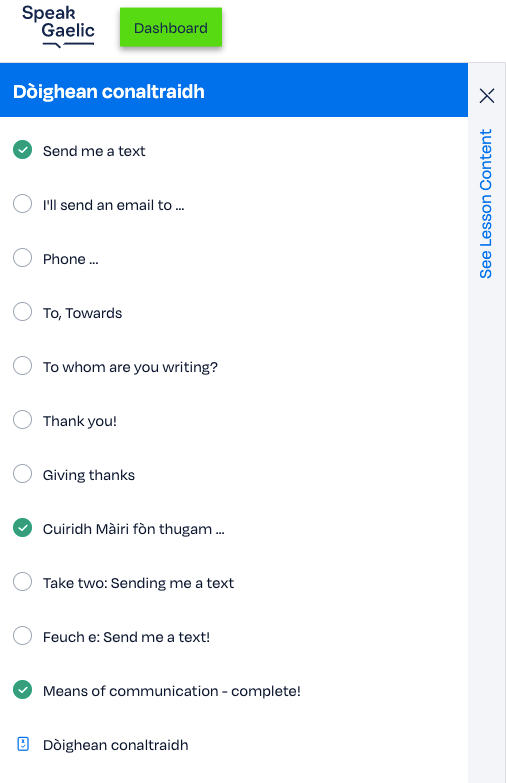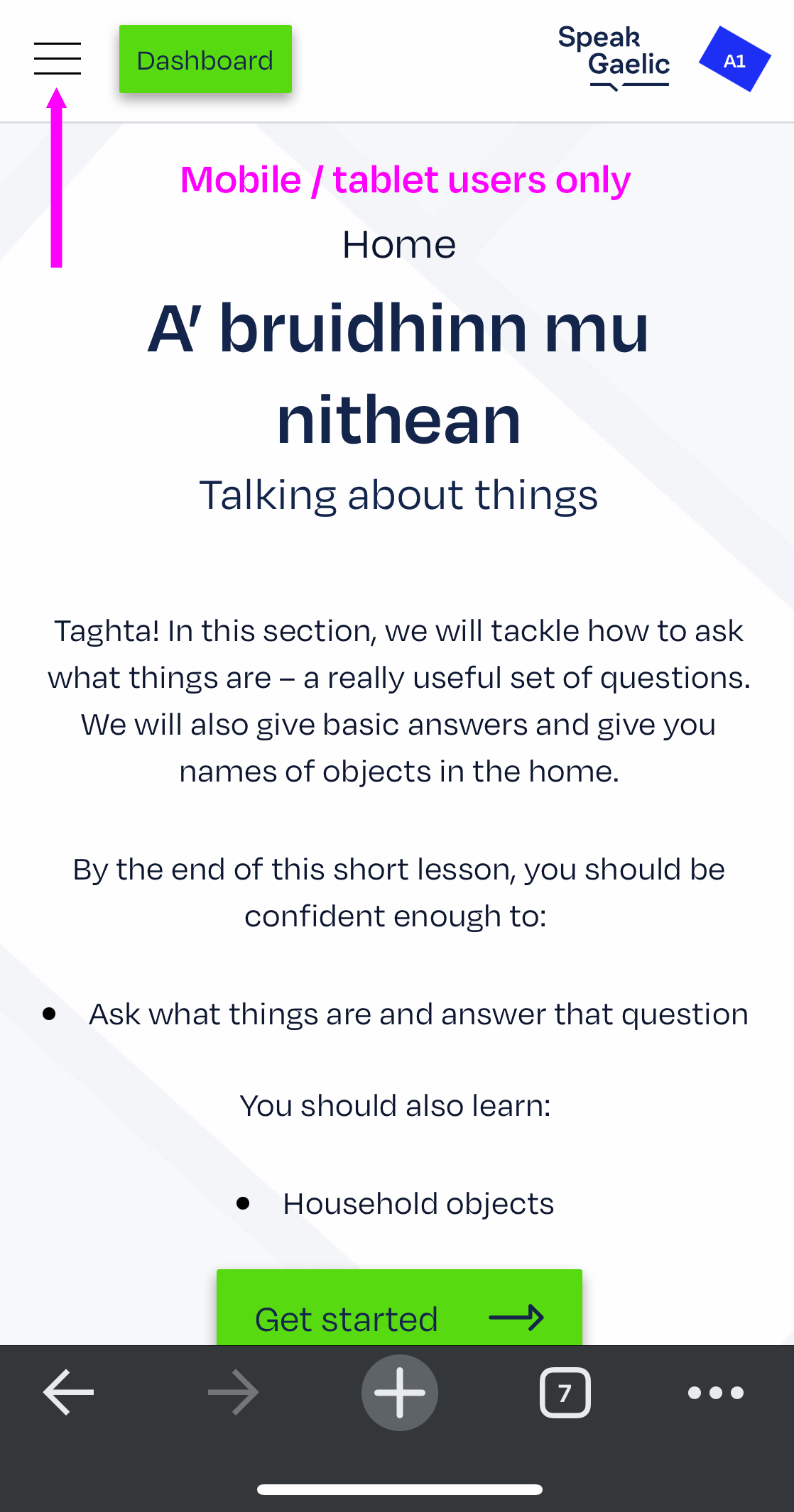Beagan eachdraidh 2
A little history 2
How did you get on? Here is the translation.
It was Gaelic speakers who created the Kingdom of Scotland, and Gaelic was the majority language of the country for centuries. In the year 1000 Gaelic was spoken in almost every corner of Scotland.
But there were other languages too. The Vikings were ruling in the Western Isles and in the north, and they spoke old Norse, but Gaelic was spoken in their areas as well, and Gaelic got the upper hand on the old language of the Vikings. In the south, Old English had come in in East Lothian and Berwickshire. Old Welsh, a language known as Cumbric, was still being spoken in Roxburghshire and Dumfriesshire.
As we do today, people moved between these areas, working and speaking more than one language!
An guth fulangach le BI
The passive voice with BI
We saw in the conversation Thathas and Nach eilear? These are examples of the guth fulangach (passive voice), when we speak in an impersonal manner, and when we don’t say who did an action:
A bheilear / A bheileas?
Is?
Nach eilear / Nach eileas?
Isn’t?
Thathar / Thathas
Is
Chan eilear / Chan eileas
Isn’t
Thathas ag ràdh …
It is said …
Nach eilear den bheachd …
Isn’t it thought …?
Thathar a’ tuigsinn gun tàinig mìltean de Ghàidheil, às a’ Ghàidhealtachd, ach cuideachd à Èirinn, a dh’fhuireach ann an Glaschu aig àm an Tionndaidh Ghnìomhachais (the Industrial Revolution).
It is understood that thousands of Highlanders/Gaels came, from the Highlands, but also from Ireland, to live in Glasgow at the time of the Industrial Revolution.




